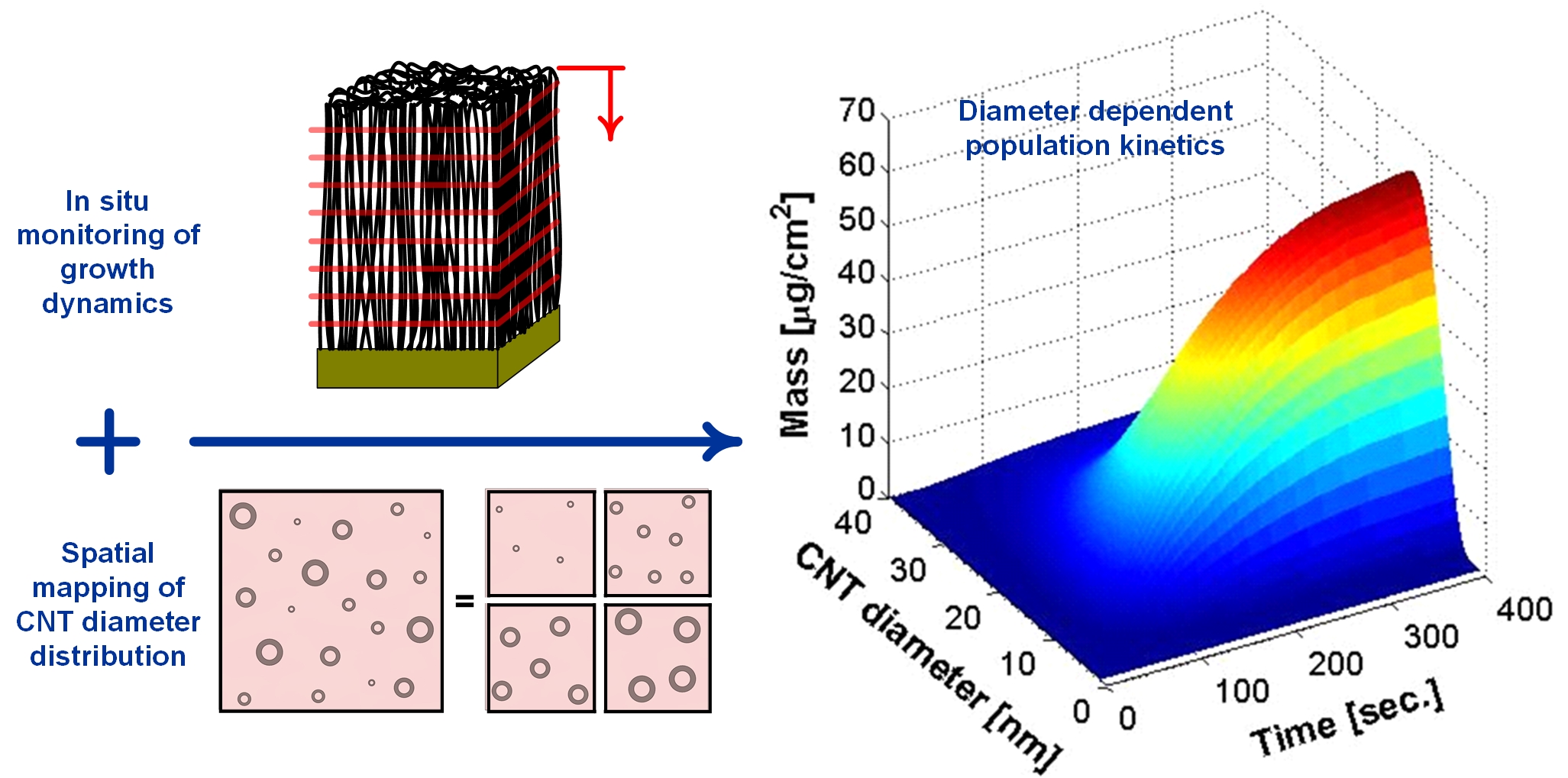
Year
2012Volume
50Pages
5106 –5116Abstract
We reveal that the collective growth of vertically aligned carbon nanotube (CNT) forests by chemical vapor deposition (CVD) is governed by the size-dependent catalytic behavior of metal nanoparticles, which can be quantitatively related to the activation and deactivation kinetics of subpopulations of CNTs within the forest. We establish this understanding by uniquely combining real-time forest height kinetics with ex situ synchrotron X-ray scattering and mass-attenuation measurements. The growing CNT population is divided into subpopulations, each having a narrow diameter range, enabling the quantification of the diameter-dependent population dynamics. We find that the mass kinetics of different subpopulations are self-similar and are represented by the S-shaped Gompertz model of population growth, which reveals that smaller diameter CNTs activate more slowly but have longer catalytic lifetimes. While competition between growth activation and deactivation kinetics is diameter-dependent, CNTs are held in contact by van der Waals forces, thus preventing relative slip and resulting in a single collective growth rate of the forest. Therefore, we hypothesize that mechanical coupling gives rise to the inherent tortuosity of CNTs within forests and possibly causes structural defects which limit the properties of current CNT forests in comparison to pristine individual CNTs.






